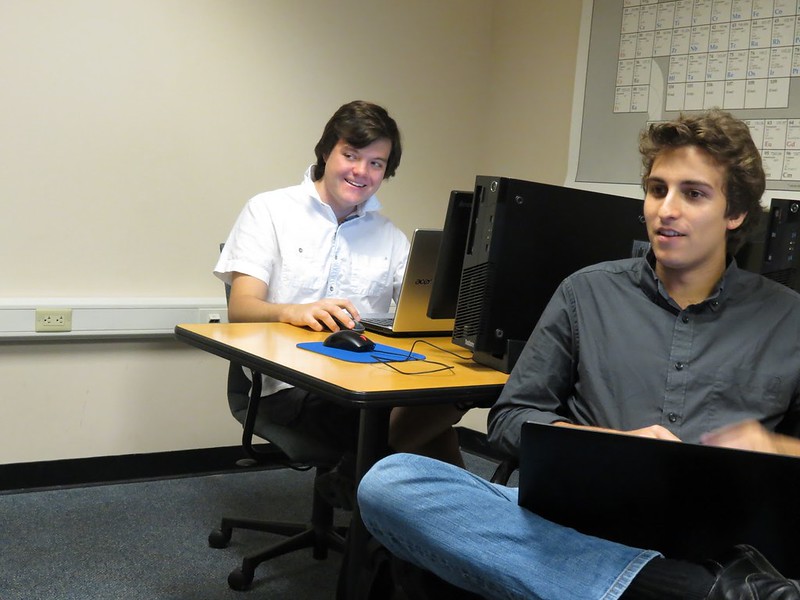
It’s an exciting time to study computer science at New College. With a budding big data program and a strengthening area of concentration (AOC), the curriculum is developing a concrete structure while still maintaining flexibility, allowing students to explore an array of topics that fall under the broad computer science umbrella, such as bioinformatics, software development and security. As the college hires new faculty, the course catalogue for computer science is steadily growing. Feeding off this energy, a group of eager students recently started a club to further connect the department. The initiative – Computer Science Club – has already garnered support from students inside and outside the AOC.
“The New College Computer Science Club is our attempt at organizing that much-needed practice and experience as a group so that we can be better prepared to contribute meaningfully to the world,” second-year Eric Voorhis, one of the main organizers, said in an email interview. By regularly gathering those curious about computer science in a consistent, casual and welcoming setting, the club adds cohesion to the department while also providing an easy and interactive way to gain computing practice. The primary interest is collaboration, a cornerstone in the computer science field.
“It’s gratifying as a professor to have students that are this into their education that they would want to go and make this happen,” Professor of Computer Science Matthew Lepinski said. “As someone who has been involved in interviewing and hiring Bachelors students in computer science, the types of projects the Computer Science Club is talking about are the types that look really good to potential employers.”
Currently, the main organizers are second-year Hunter Osking, third-year Ben Carothers, former student Skyler Kistler, and Voorhis. The idea originally came to Kistler late last year after he noticed the lack of unity among computer science students. He approached second-year Dylan Purvis, Osking and Voorhis, who then met with Professor of Computational Science David Gilman and Professor of Computer Science Gary Kalmanovich about making the idea a reality.
“Students who take initiative and engage in these type of projects are the kind of students that employers want to hire,” Lepinski said.
Advertisement was the first step. At the beginning of this academic year, to compensate for missing Club Fair, Computer Science Club organizers tried active advertisement. They spoke to more faculty, such as Lepinski and Professor of Computer Science Harvey Hyman, and received permission to give short presentations about the club at the end of some classes before circulating a sign-up sheet to interested students.
The Computer Science Club then held its first meeting in Chae over pizza, a general introduction and potential project sharing. Twenty-three students joined the discussion, in which ideas for software projects – a Computer Science Club website, a virtual card game – and hardware projects were exchanged. Following the meeting, a small group of students – now the main organizers – congregated to create the club’s organization.
The conclusion of those organizational conversations was a general computer science “meetup,” which entails a low pressure, weekly gathering time. A space where students could engage in all different kinds of work related to computation, such as projects, homework, workshops and tutorials.
“It gives me a chance to focus on my work,” thesis student Sarah Russell said. “I have trouble focusing when I’m in my room.”
All levels of students from every AOC are encouraged to participate – the only prerequisite is an interest in computer science, whether that be for a career or a hobby. Many of the advanced students graciously offer their help to beginners, scheduling time inside and outside of the weekly meet-up time to mentor on a variety of concepts.
“It’s cool to see people who are just starting out with computer science and upper years who have been doing it for a while work together on projects like this and coming together to learn,” thesis student Wiley Corning said.
For the club as a whole, the central initiative at the moment is designing and hosting websites for other clubs on campus. The organizers received a $200 Student Allocations Committee (SAC) club discretionary, most of which is slated for domain hosting on a server.
“This club is ‘Vim,’” Carothers joked in typical computer science kid fashion. ‘Vim’ is a free, open source and loved text editor program.
The weekly meet-ups occur on Sundays from 4 p.m. to 7 p.m. in the Heiser Computer Lab (HNS 108 in the math hallway).
